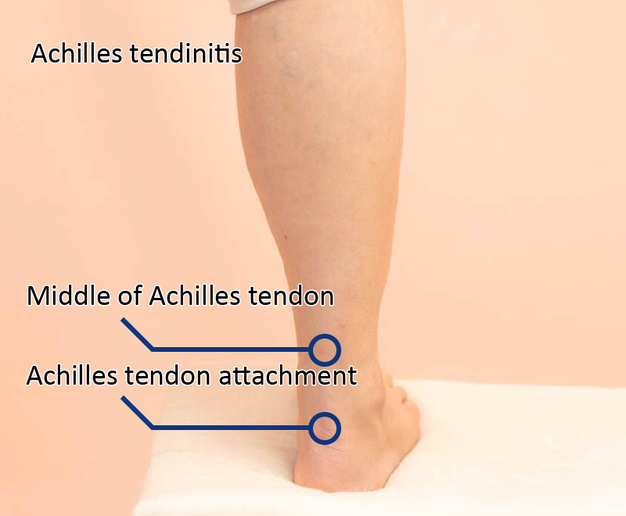
The Achilles tendons are a thick, long tendon found in the heel area of the foot
It joins the calcaneus and gastrocnemius muscles at the bottom of the calf to a small insertion point on the heel bone. It's the strongest tendon in your body and enables people to jump, run and walk without much effort.
So why does an Achilles tendon have such a strong tendon? In simple terms it's because it's one of the most important ligaments in your body. This ligament provides the "shock absorption" that cushions your feet against the ground when you land. Without this protection, you can be sure that every movement will be as painful as it can be. In fact, the heel is where your body's largest muscles reside; it's here that most pain occurs.
The tendon is made up of four long and narrow fibrous strands. The tendon itself lies about three quarters of an inch under the skin. The length of your Achilles tendon usually ranges from about six to seven inches. The most common tendonitis in athletes is caused by overuse; the tendon usually becomes inflamed because you're over-stretching or your Achilles tendon tightens after a period of time without being used.
So, what are the symptoms of Achilles tendonitis? The most common symptom is pain felt on the heel side when walking or running. Another common symptom is a sharp, stabbing, shooting or throbbing pain that doesn't go away. When you get a cut or scrape on your heel, the pain often intensifies even more.

In order to heal the pain you need to strengthen the tendon
The best way to do that is to do a warm up which includes proper form. This will get the blood flowing, get your muscles warm and loosen the tissues that are affected. A good warm up will also help your body heal faster and allow you to heal faster. If you want to do some stretches after a warm up, you should start out light but work your way up to about ten repetitions until you reach a good strength level.
An strain usually goes away with a few days at home. If it persists or if you feel any redness or swelling after a day, visit your doctor.
If you decide that Achilles medication is necessary, you should be aware that there are many types of medication available. Corticosteroid cream will help heal the pain. You'll also want to apply ice to the injury and keep the area warm. You'll want to rest your Achilles for a few days after applying ice. You may also want to do exercises and stretching.
In the event that the pain continues or gets worse, you should consult a doctor and get a prescription for a stronger medication. You'll also need to make sure that you keep your feet elevated at all times to prevent further inflammation. As with any injury, you need to rest to let the tendon heal. It's important that you never over-exert yourself if you have Achilles tendinitis; this will only cause more damage to your heels and will make the condition worse.
If you notice pain or burning in your heel or lower back, don't hesitate to seek medical attention right away. Don't delay any longer than absolutely necessary, as it could be the beginnings of a very serious injury. It is not uncommon to see many people neglect their aching, stiff lower back and hips and then later discover that they have developed a tennis elbow.


